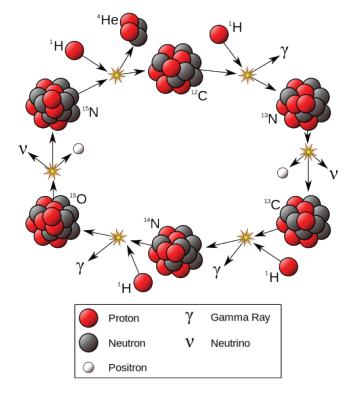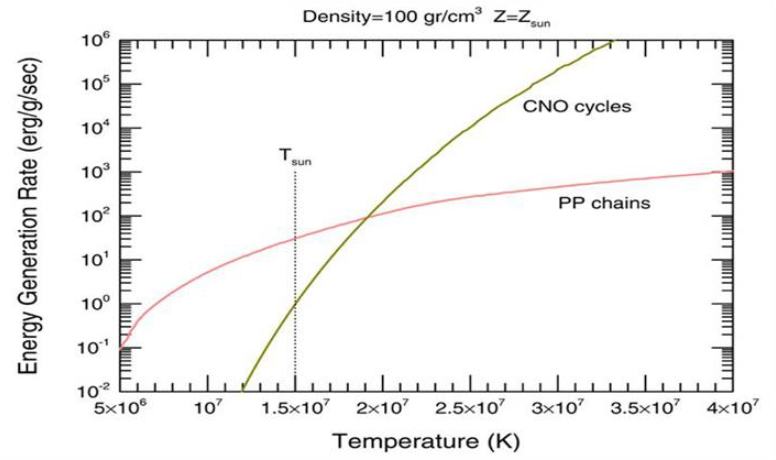Carbon-nitrogen-oxygen cycle
This is the other main cycle (also referred to as the CNO cycle). It is most effective for more massive stars - it starts at temperatures of about 15 000 000 K and dominates at temperatures of about 17 000 000 K. It also forms a helium nucleus of four protons, but the process is more complex and requires the presence of carbon and oxygen. The carbon / oxygen nuclei react in the first stages and separate in the latter. In this way, they play the role of a catalyst, which is why the cycle is called carbon, or carbon-oxygen (the figure below).
The temperature into the core of the Sun is T = 15 700 000 K - so in its core the main nuclear fusion is p-p chain reactions. In figure below there are shown the temperatures at which the two processes - p-p and CNO - are effective. The temperature in the core of the Sun is also noted, as it can be seen that for our star almost twice as much energy is released during the proton-proton cycle.




